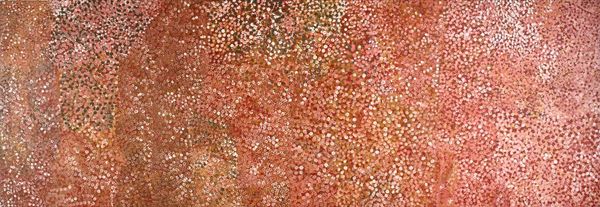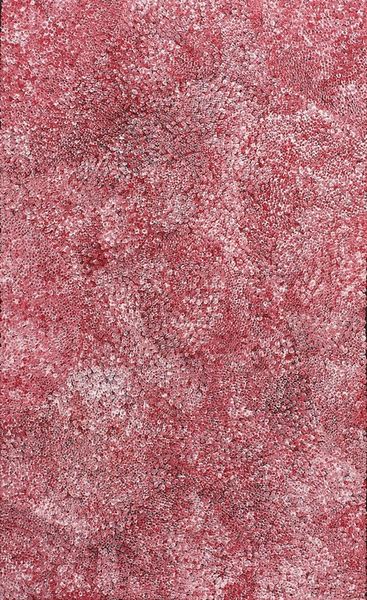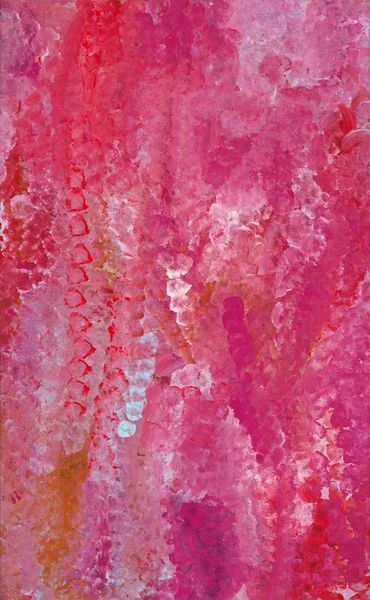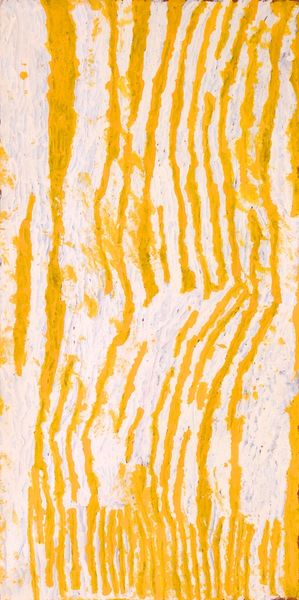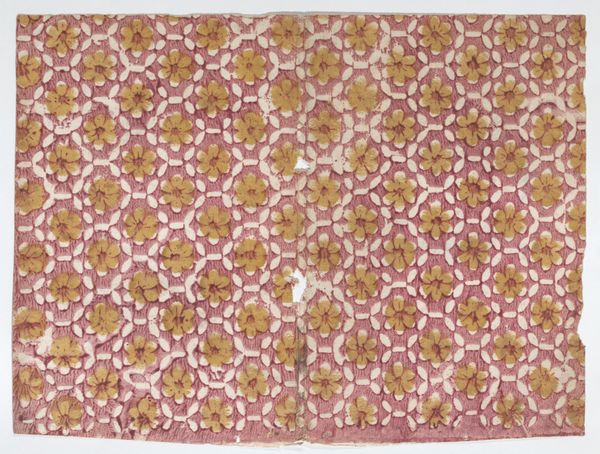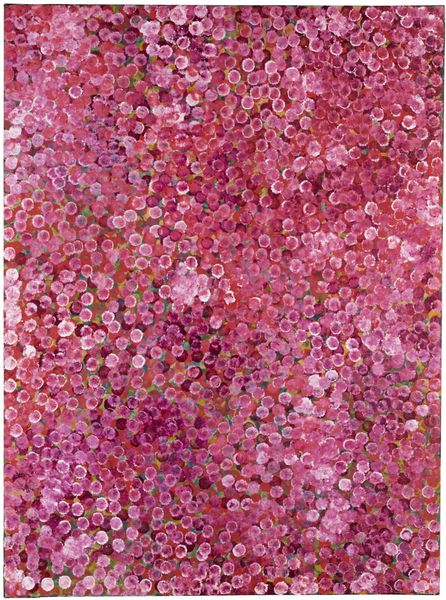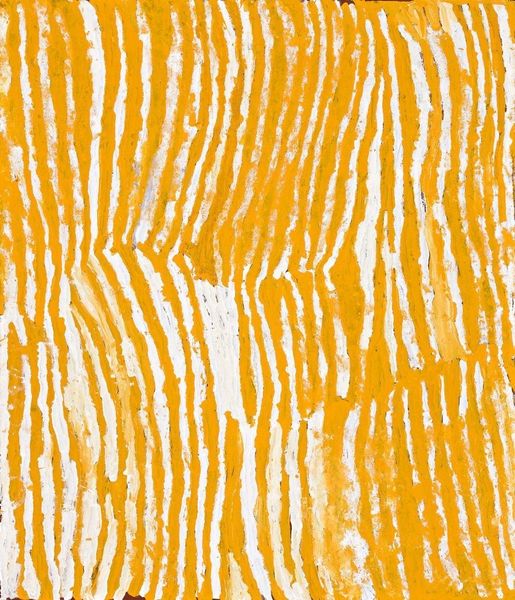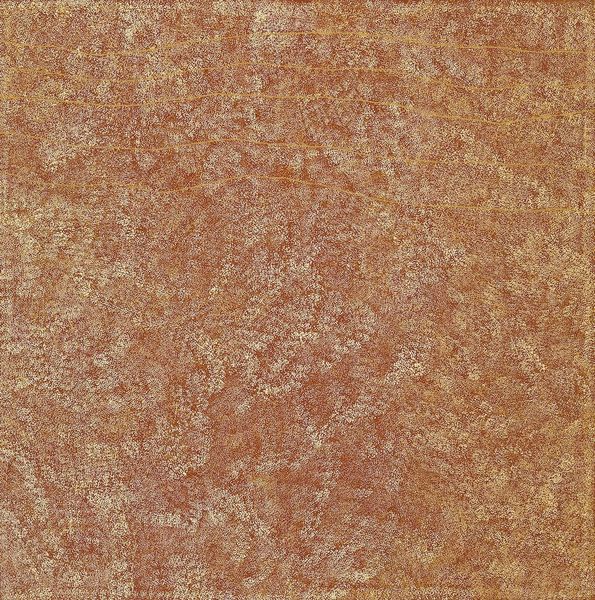
painting, acrylic-paint
#
natural stone pattern
#
naturalistic pattern
#
contemporary
#
organic
#
painting
#
acrylic-paint
#
pattern background
#
abstract pattern
#
organic pattern
#
flower pattern
#
abstraction
#
intricate pattern
#
layered pattern
#
pattern in nature
#
organic texture
Dimensions: 150 x 120 cm
Copyright: Emily Kame Kngwarreye,Fair Use
Curator: This is “Untitled” by Emily Kame Kngwarreye, painted in 1992. It's an acrylic on canvas. Editor: My first impression is warmth. It feels almost like looking at an aerial view of a desert landscape at sunset, the colors blending and blurring so softly. Curator: Kngwarreye, despite beginning her painting career quite late in life, became one of Australia's most prominent artists. Her work holds immense cultural significance. She represented a vital link to Indigenous traditions while navigating the contemporary art world. Editor: Absolutely. You see that tension between tradition and modernity expressed in the work itself. The use of acrylics—a modern medium—contrasts with the age-old practice of dot painting, connecting her to the deep history of Aboriginal art. The dots are like seeds, perhaps, dispersed across the land. Curator: Yes, many see her work as deeply connected to the land and her spiritual relationship to it. It moves between abstraction and representation. We must be cautious about applying a Western lens onto artwork from a radically different culture. What strikes you about how Kngwarreye's art was perceived? Editor: The art world tends to exoticize Indigenous artists, framing their work solely through the lens of their cultural heritage, often neglecting its innovative qualities. What did Kngwarreye’s contemporaries think? Did they place value on the social commentaries and political contexts that drove her output? Curator: The politics of visibility and representation were definitely at play. The commercial success that Kngwarreye experienced put her on display within international art markets. Yet this commercialization raises concerns. Whose stories get told, how are they told, and for whom? This reminds me of conversations around Indigenous art being treated like ethnographic artifact rather than art that warrants serious study, discourse, and exhibition. Editor: Exactly. Thinking about that visibility, who profits? How does this piece enter into the wider discussions concerning Indigenous rights? Looking again at “Untitled,” I see an intersection. There are narratives of dispossession and resistance etched into the work through colors, materials, and application, like memory traces. Curator: It gives us much to consider when we appreciate this piece, and other artworks in dialogue with broader histories of colonialism. Editor: Agreed. Engaging with this piece invites us to understand the multifaceted politics within Kngwarreye's artistic journey.
Comments
No comments
Be the first to comment and join the conversation on the ultimate creative platform.
